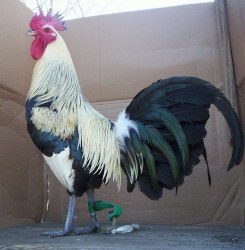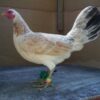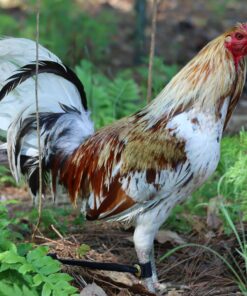Regular Grey Stag
$300.00 – $1,200.00
Reasons To Buy
- Fast delivery to any location
- Secure payments
- Eco-friendly manufacturing
Regular Grey Stag
A Classic Lineage in the World of Gamefowl
The world of gamefowl is rich with history, tradition, and pride—none more so than the storied lines of Grey gamefowl. Among these, the Regular Grey Stag holds a special place as a reliable, well-respected bird known for its balance of strength, speed, and intelligence. Whether you’re a seasoned breeder, an enthusiast, or simply exploring the heritage of game birds, the Regular Grey is a name that commands attention.
🐓 What Is a Regular Grey Stag?
The Regular Grey Stag refers to a young male gamefowl of the “Regular Grey” bloodline or strain. In gamefowl terminology:
-
“Stag” is a term used for a male bird under 12 months old, typically between 5 to 10 months of age.
-
“Regular Grey” is a well-known bloodline or color variety of American gamefowl, typically recognized for its steel-grey feathers with black or dark accents.
This particular line is admired for producing versatile and high-performance birds that carry both physical beauty and excellent instincts—traits valued by breeders and handlers alike.
🔍 Characteristics of the Regular Grey Stag
🪶 Appearance
-
Feather color: Silver or steel-grey with dark or black hackles and tail feathers
-
Leg color: Usually yellow or white, depending on lineage
-
Eyes: Sharp, alert, often orange or reddish in color
-
Build: Athletic, muscular, with a balanced frame and upright stance
💢 Temperament
Regular Grey stags are known for being:
-
Alert and intelligent
-
Quick-footed and agile
-
Aggressive when mature, but often manageable during stag age with proper handling
🧬 Bloodline Strength
The Regular Grey is often considered a “foundation line”, frequently crossed with other breeds to produce birds with enhanced qualities such as endurance, cutting ability, and strategic behavior.
🥇 Why the Regular Grey Line Is So Respected
-
Consistency: Breeders trust this line for its predictable performance and dependable traits.
-
Versatility: Regular Greys adapt well to both show standards and crossbreeding programs.
-
Battle-tested heritage: With deep roots in traditional gamefowl competition (where legal), they have long been favored for their fighting spirit and durability.
-
Strong genetic base: The line has been selectively bred for decades, producing vigorous, healthy offspring.
🐥 Raising a Regular Grey Stag
If you’re raising a Regular Grey stag from chick to maturity:
-
Nutrition: Provide high-protein starter feed, transitioning to a balanced diet with grains, greens, and supplements for muscle development.
-
Housing: Ensure adequate space and secure fencing; stags may begin showing territorial behavior as they age.
-
Training: Gentle handling early on can reduce aggression. Observe and assess behavior and development closely.
-
Separation: As testosterone rises, stags will begin to challenge each other—separate them by 6–8 months to avoid injury.
⚠️ Ethical Considerations
It’s important to note that gamefowl breeding and ownership laws vary by region, especially where cockfighting is prohibited. Many breeders today raise these birds for:
-
Historical preservation
-
Breeding programs
-
Poultry shows
-
Private collections or heritage farms
Always ensure your practices are in line with local animal welfare laws and promote responsible ownership.
Final Thoughts
The Regular Grey Stag is more than just a bird—it’s a representation of tradition, selective breeding, and the enduring appeal of gamefowl in aviculture. With its striking appearance, strong instincts, and rich genetic heritage, it remains a cornerstone for breeders and enthusiasts who value both form and function.
Whether you’re starting a line, enhancing a program, or simply appreciating their legacy, the Regular Grey is a timeless choice in the world of classic gamefowl.
| Select Fowl | Pairs, Pullets, Stags, Trio |
|---|---|
| Gender | Female, Male |
Be the first to review “Regular Grey Stag” Cancel reply
Related products
GAME FOWLS FOR SALE
GAME FOWLS FOR SALE
GAME FOWLS FOR SALE
Fighting Roosters
GAME FOWLS FOR SALE
Fighting Roosters
Fighting Roosters
GAME FOWLS FOR SALE













Reviews
There are no reviews yet.